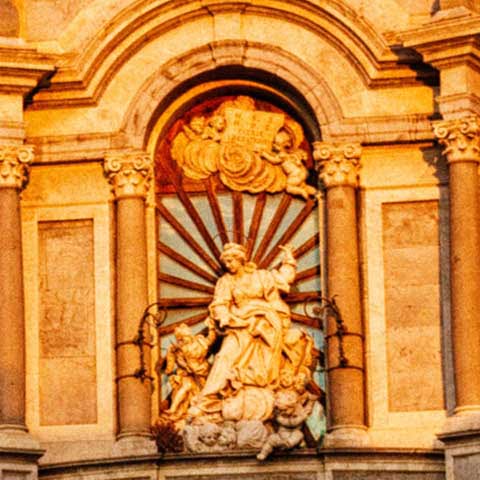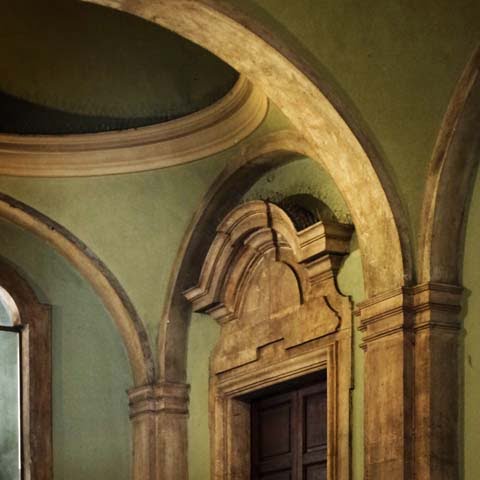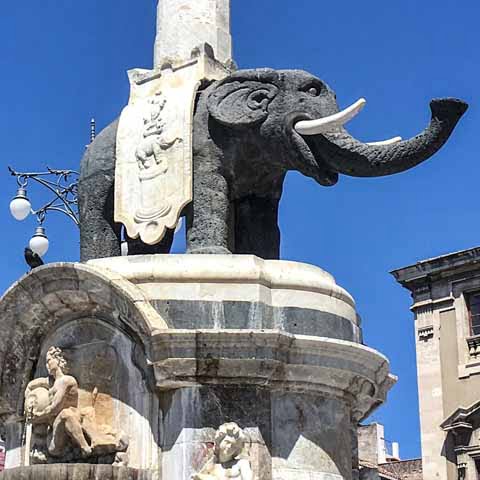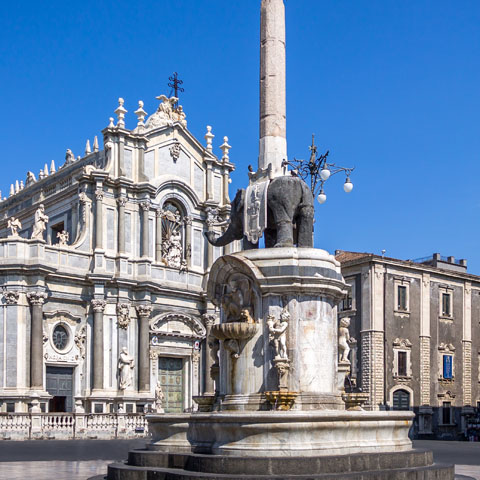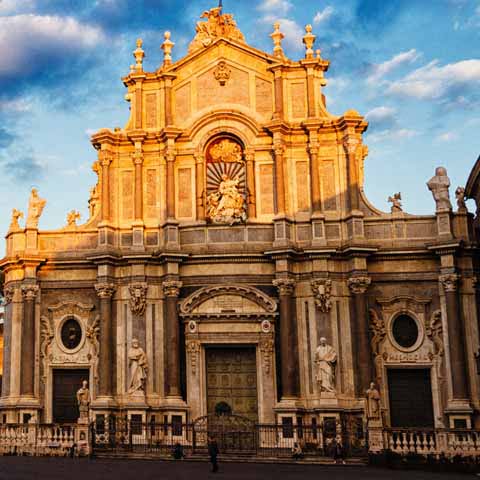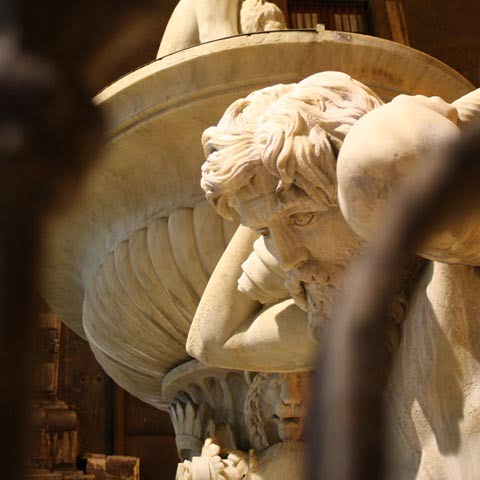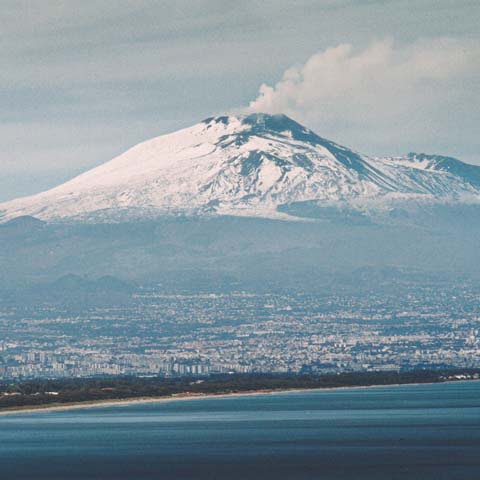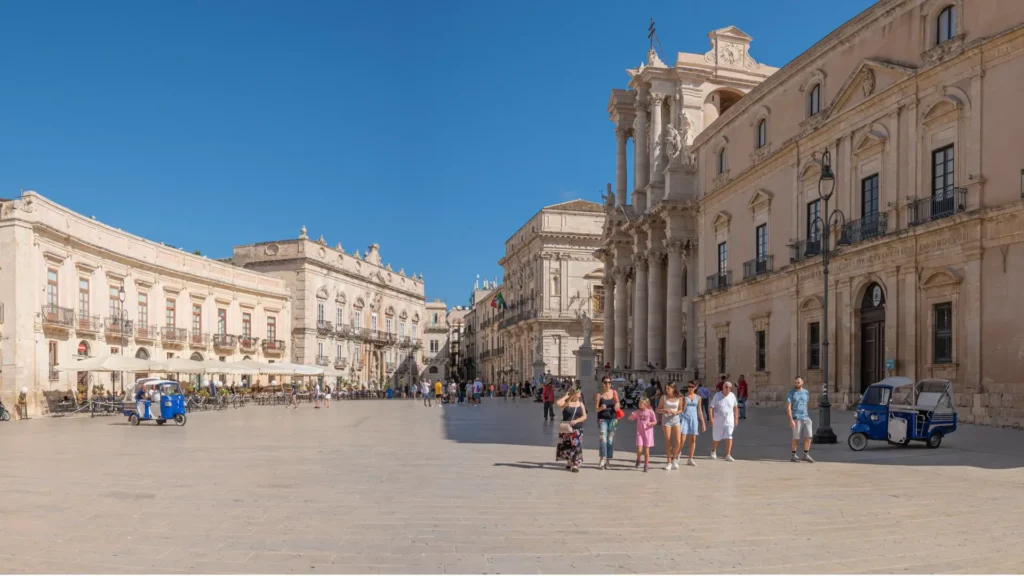Off the eastern coast of the island of Sicily lies the thriving Italian city of Catania. This beautiful city, located at the base of the Mount Etna volcano that faces the gorgeous Ionian Sea, is a hub for both tourism and culture. It is home to several United Nations Educational Scientific Cultural Organization (UNESCO) World Heritage Sites. When planning a trip to Italy, be sure to add Catania to your itinerary for a fascinating look at the culture of this ancient city.
The city’s roots can be traced back as early as 730 BC. During its existence, the city has stood independently and has been occupied by various rulers and regimes. However, many of these influences have blended together to make Catania a city rich in tradition, culture, and art.
ARCHITECTURE
One of the most stunning examples of Baroque architecture in Catania is the Catania Cathedral, which is dedicated to the city’s patron saint, Sant’Agata. Rebuilt following the 1693 earthquake, the cathedral is located in the center of town in Piazza Del Duomo. The façade is comprised mostly of grey stone and features several doorways, statues, and geometric style windows. Not to be missed inside the cathedral are the tomb of composer Vincenzo Bellini, awe inspiring frescoes, and precious paintings.
The Monastero dei Benedettini (Benedictine Monastery) is a religious complex in Catania that is also a UNESCO World Heritage Site. The circa sixteenth century structure is roughly three stories and features straight lines, ornate windows, and balconies. Do not miss the opportunity to wander the beautiful grounds of the monastery and climb up to the basilica dome for unparalleled views of the city below.
Adjacent to the monastery is the Church of San Nicolò l’Arena. This striking structure is partially unfinished and appears to a be a mixture of several building styles, including Baroque and Neogothic. Perhaps the most notable aspect about the Church of San Nicolò l’Arena are the half-finished columns that stand in front and contribute to an unusual appearance for a church. This oddity is well worth a visit for something that is definitely architecturally unique.
Throughout the city of Catania, there are numerous examples of Baroque architecture. The sheer number of architectural feats are too many to list individually, but wandering the main streets of the city to view these buildings in person is highly encouraged. The majority of these Baroque buildings were constructed following the 1693 earthquake that struck Catania and other areas in eastern and southeastern Sicily.
An ancient example of architecture can be found in the ruins of the Roman Theater. The outdoor structure is comprised largely of limestone and lava from Mount Etna. The theater was once thought to be quite grand at more than two hundred eighty feet in diameter with seating for roughly seven thousand. In addition to time, a repurposing of the limestone blocks as building material for other structures contributed to the theater’s demise. Today, visitors can expect to see the cavea, orchestra, and back stage portion of the theater remaining.
Also of interest is the Roman Amphitheater, which is located in Piazza Stesicoro and dates back to the middle of the second century BC. Though the amphitheater is mostly covered by modern buildings, parts of the ancient structure can be seen underneath the street level. One of the largest Roman Amphitheaters at the time of its construction, the amphitheater once had an internal diameter of nearly 630 feet and could host almost 30,000 spectators (with approximately 15,000 seated and the rest standing).
Another historic piece of architecture is the ancient city gate of Porta Garibaldi. The structure is estimated to have been built during the late eighteenth century and was named after Giuseppe Garibaldi. The gate appears to be mostly gray stone with definitive horizontal white stripes. Ornate statues sit atop the archway and flank the sides of the gate. It is a humbling experience to walk through a city gate that has seen millions of people walk through its arch over the centuries.
ART
Catania is a city full of art from the architecture of buildings to the paintings and statues that abound within. The city is home to the Accademia di Belle Arti which is widely known for its commitment to artistic studies.
Catania’s Museo Diocesano is one of the best places in the city to admire religious and historic art. The museum is divided into two sections, with the first focusing on sacred art and décor from the Catania Cathedral and the second with art and sculptures from other churches within the metropolitan area of Catania as well as a dedicated picture gallery.
While many examples of historic paintings and detailed frescoes can be found inside the walls of ancient churches and museums, a new up and coming artistic trend in Catania and Sicily as a whole is Sicilian street art. As travelers wander through the city, they will see examples of this street art on walls of buildings, doors, and even some windows.
For contemporary art in an indoor setting, head to the Museo arte contemporanea Siclia (also known as MacS). The permanent collection features works by contemporary artists from Catania, Sicily, other parts of Italy, and even international artists. Among the artists represented are Fabio Modica, Daniela Astone, and Gary Weisman.
Catania is also home to La Porta Della Bellezza, which is considered to be the largest terracotta sculpture in the world. Dating back to the 1970s, the work expands along a cement wall that measures just under 2 miles. The 9,000 molds that compose the sculpture were a collaboration between Italian artists and local school children. The works are tied to poetic texts and together span 1,640 feet.
LITERATURE
One of the earliest examples of literature from Catania is that of Stesichorus’s works from circa 600 and 500 BC. This Greek lyric poet is considered one of the finest of his time period and is well regarded for his stories that are told in lyric meters. His works have been collected in over twenty books. Stesichorus passed away in Catania.
Giovanni Verga was a nineteenth and twentieth century Italian realist writer known for sharing his depictions of life in Sicily. Verga is perhaps best known for his short story and play etitled Cavalleria Rusticana and his novel I malavoglia. He was born and passed away in his hometown of Catania. Today the Teatro Verga in Catania bears his name and his house is now a museum, Casa-Museo Giovanni Verga.
Federico De Roberto was a famous nineteenth and twentieth century Italian writer. His career began writing as a journalist for newspapers before he eventually went on to author short stores and then a novel. After enjoying his literary success, Roberto returned to journalism for a time before he wrote a sequel, L’Impero, to his most successful novel I Viceré. Though born in Naples, De Roberto spent much of his formative years in Catania and passed away in Catania.
Nineteenth and twentieth century Italian journalist Nino Martoglio was born in the province of Catania and passed away in Catania. He is best known for publishing a weekly magazine periodical called D’Artagnan. He also founded the Compagnia Drammatica Siciliana and dabbled in Italian theatrical works. Despite his theater works, Martoglio is best known today for his poetry work of Centona.
MUSIC
Music is such an integral part of the culture of Catania it can be found in both education institutions and annual festivals. The Istituto Musicale Vincenzo Bellini is renowned for its musical studies. One of the more popular music events in the area is One Day Music which attracts artists from all over the country and in some cases the world.
Vincenzo Salvatore Carmelo Francesco Bellini, otherwise known as simply Vincenzo Bellini, was a famous nineteenth century Italian opera composer. He grew up in Catania and his childhood home is a living museum dedicated to his early family life. Bellini’s legacy is largely considered to be the long flowing melodic lines he created which earned him the nickname of “the Swan of Catania.” At that time period, such long melodies were unheard of until Bellini began composing. Although Bellini is known for composing many operas, his musical career was cut short when he passed away during his early thirties. Today, Bellini is remembered for operas Norma, Il pirata, I puritani, and many others.
Catania’s Teatro Massimo Vincenzo Bellini was established in the late nineteenth century and is named after Vincenzo Bellini. The theater sits in Piazza Vincenzo Bellini and can hold roughly twelve hundred people. The opera house regularly has musicians perform Bellini’s works and has been visited by famous opera singers from across the globe. The theater’s grand exterior and luxurious interior make it a stunning stop for sightseers.
Giovanni Pacini was a nineteenth century Italian opera composer born in Catania, Sicily. He wrote more than seventy operas and is thought to have had some influence on fellow composer Vincenzo Bellini.
SCIENCE
Catania is home to a unique interactive science museum called Città della scienza di Catania. The museum consists of five sections as well as an auditorium and laboratories. Inside the museum, inquisitive young minds can learn about science and technology via exhibitions, videos, concerts, virtual reality, and more. Topics include scientific fundamentals as well as biology, chemistry, IT, robotics, and physics.
CINEMA
Roberto Benigni’s 1991 comedy film Johnny Stecchino about a bus driver who meets his mobster doppelgänger was partially filmed in Catania. Other movies filmed in Catania, at least in part, include L’arte di arrangiarsi (1954), Il Gattopardo (1963), Malèna (2000), and I Viceré (2007).
Travelers can learn more about Catania’s role in Italian cinema as the city’s Cinema Museum. The museum hosts many cinema relics as well as film scene reconstructions with one section dedicated to Catania.
As the second largest city in Sicily and the main hub of eastern Sicily, Catania offers many cultural sights that are of interest to travelers. Travel to Catania to discover the city’s beautiful Baroque architecture, literary history, and musical legacy.
*SPECIAL NOTE: Because the Italian city of Catania can experience earthquakes and volcanic eruptions, at times repairs may be needed in various parts of the city. Some of the monuments and landmarks described in the narrative above may be described in their pre-earthquake and volcanic eruption condition.
Travel Guides
The Sicily Region of Italy
The Cities of Sicily, Italy
